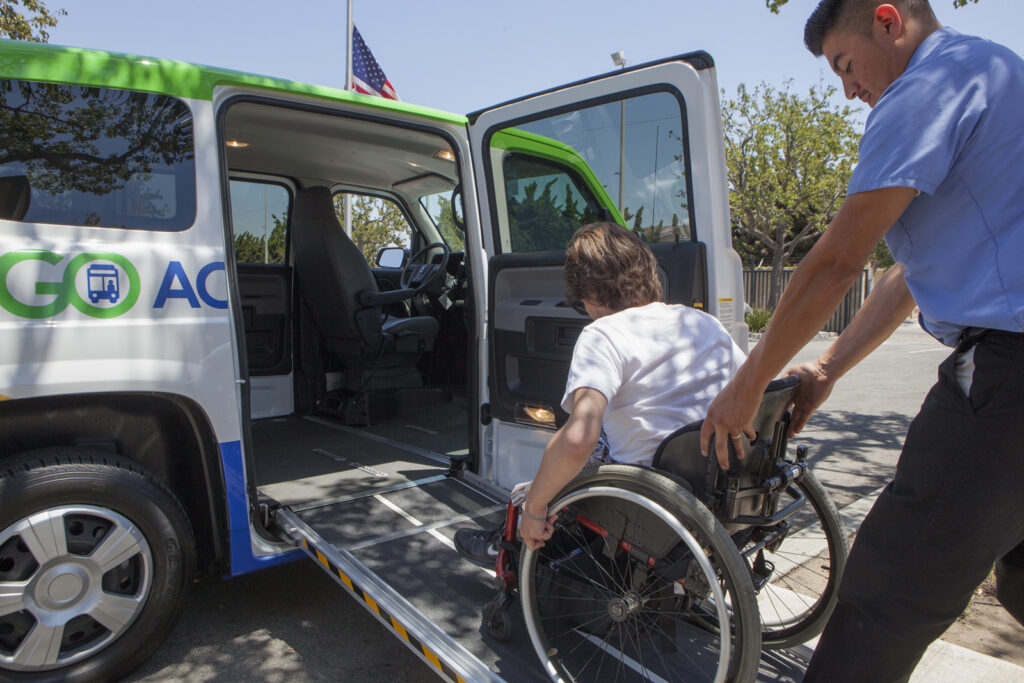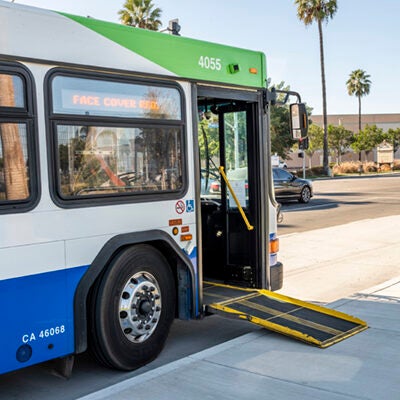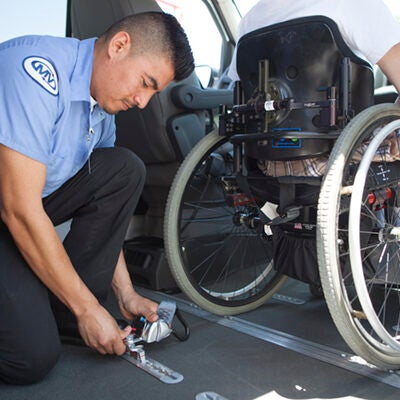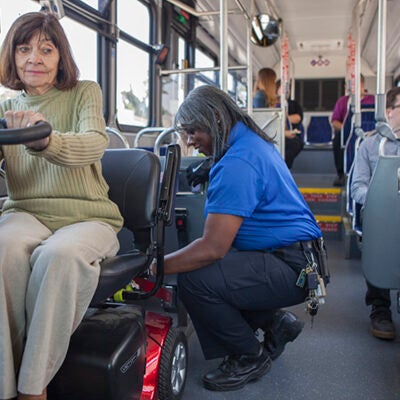All vehicles have accessibility features that help make traveling easier for seniors and people with disabilities to get around using public transportation. If you have a disability, or you use a wheelchair or scooter, or have limited mobility, these accessibility features can help you travel on buses.
Wheelchair Ramps & Kneeling Buses
All buses are fully accessible to people using mobility devices. All buses accommodate wheelchairs, scooters, and similar mobility devices up to 30 inches wide, 48 inches long and up to 600lbs.
Additional Accessibility Issues
TDD - Hearing or Speech Disabilities
People with hearing or speech disabilities may receive route, schedule and fare information by calling 711 CA Relay Service Monday through Friday 8:00 a.m. to 6:00 p.m. You can also email a request using our comment form.
Visual Disabilities
All buses announce their route name and destination over an external speaker system as they pull up to a stop. All buses announce all stops as the bus approaches though audio and visual announcement systems. You can also ask the bus operator to announce when the bus is approaching your stop. A sign near the operator lights up when a stop has been requested. The bus driver will also announce any other stops or major transit points on request.
Large format Bus Books are available upon request.
Service Animals
Your service animal is welcome on the bus. No permit is required, but the operator may ask to confirm that your animal is a service animal. Service animals must be on a leash or harness at all times. Service animals may sit on the floor out of the aisle. Service animals under fifteen pounds may be held in the passengers lap, but may not block the aisle or occupy a separate seat.
In accordance with U.S. Department of Transportation regulations, a “service animal” means any guide dog, signal dog or other animal individually trained to work or perform tasks for an individual with a disability, including, but not limited to, guiding individuals with impaired vision, alerting individuals with impaired hearing to intruders and sounds, pulling a wheelchair, or fetching dropped items. An animal which solely provides emotional support, well-being, comfort or companionship is not a service animal. These types of animals, “companion animals,” are considered pets, which are allowed on board in a closed carrier.

Origin to Destination Paratransit Service
GCTD’s GO ACCESS paratransit service is for people who are not able to ride regular buses due to a disability or disabling health condition.
Mobility Training
GCT provides mobility training for interested individuals and groups. This training includes a demonstration of the features of our buses and the opportunity to board a bus to familiarize yourself with these features. Training will also include instruction in how to read schedules. Please call the GCT Administrative Office if you would like more information or wish to schedule a mobility training session.
Americans with Disabilities Act (ADA)
GCTD is committed to ensuring that no person is excluded from participation in or denied the benefits of its services on the basis of disability as provided by the Americans with Disabilities Act (ADA). If you have a need requiring special accommodation you can make a request. You can also file an ADA complaint if that request is denied.


